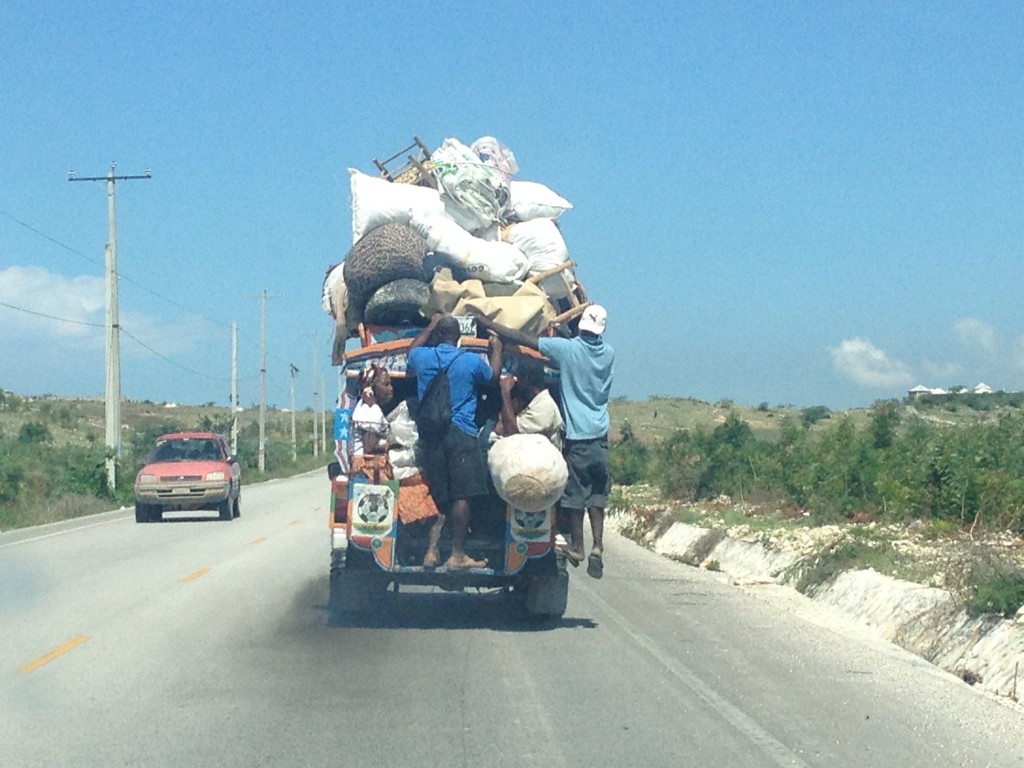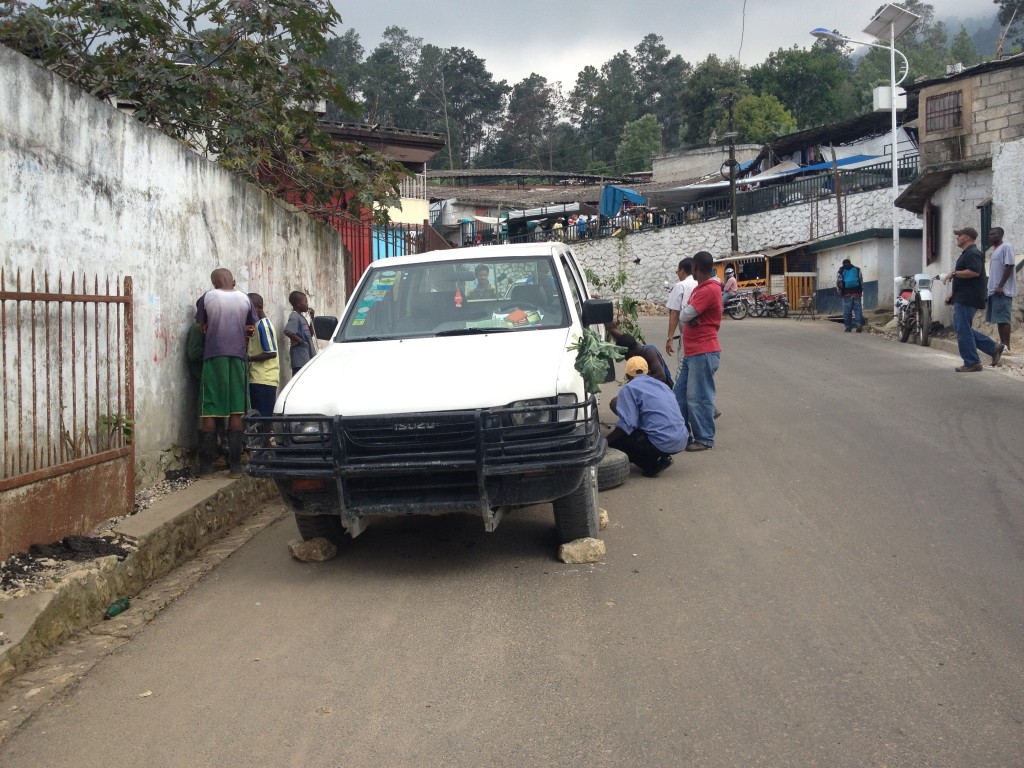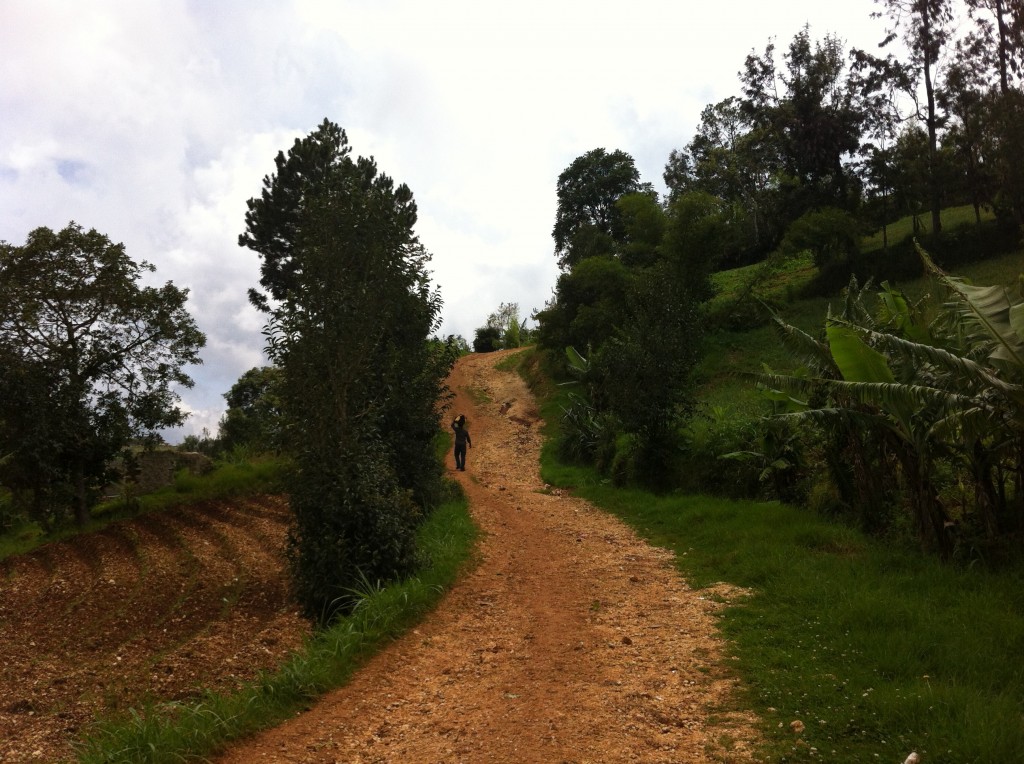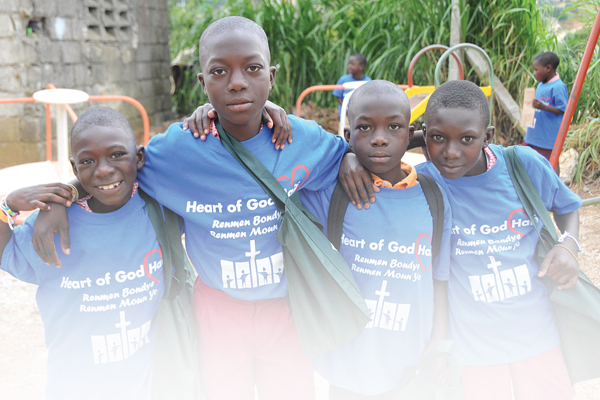
Anyone who has ever driven in a third world country will tell you that it is always an experience. What may be called the “standard of driving” is quite different from what we are used to in the U.S. (although there are usually standard practices everywhere I’ve been, despite the look of chaos.) With horns honking all along the way, and lanes of traffic forming where there doesn’t appear to be room for them, it is a quite sensory exercise to navigate your way around behind the wheel. There are motorcycle taxis, often carrying whole families, weaving in and out of traffic. There are cargo trucks that are way too full. There are street markets that pour out into commonly driven roads, yelling at drivers not to hit their wares. There are big water-hauling trucks who forcibly claim the right-of-way, pushing their way through traffic. There are tap taps constantly stopping along the way to pick up and drop off passengers, causing you to swerve into oncoming traffic to go around them. All-in-all, there’s never a dull moment on the streets.
Add to this the fact that Haiti’s economic infrastructure doesn’t allow for much government-funded road repairs. As such, it is often the more wealthy property owners who pay to maintain the roads near their homes. For those without the means of doing so, or who live in poor, over-populated areas, the street systems are very, very poor.
This is the case with the road to our orphanage. You leave Port-au-Prince from Petionville (the richer area of the city) on a very well-kept paved road. You zig and zag on the road up the mountain through houses that would make even some upper-middle class American’s jealous. However, before you get all the way to Kenscoff proper, you turn off on one of the most worn-down, rain-washed, pothole-ridden roads in the area.
For team members on HG Haiti trips, this road which takes about 20 minutes to traverse one direction, is one of the worst parts of the daily schedule. For those in the very back of the vehicle, it can be a wildly-bumpy ride.
However, it is all a part of the missionary life here, and you deal with the headaches driving causes, because the work being accomplished makes it worth the pain.
Unfortunately, one of the by-products of driving these awful roads, or inching your way across town in horrendous traffic takes it’s toll on more than just the driver. You continually pass vehicles with flat tires, overheating engines, or other issues leaving the driver stranded on the side of the road.
Since purchasing our ministry vehicle a couple of months ago – a very used Toyota Land Cruiser – I too have had my share of breakdowns, flat tires, and other issues. This is very difficult for ministries like ours, which function on very tight budgets, because most people are more than willing to sponsor children, or give to building projects, but when it is the daily cost of maintaining a vehicle, there is not a set amount that can be given. Every incident is different.
After purchasing our vehicle, we had to spend a fair amount of money getting it tuned up and the bugs fixed. But with the required amount of travel to maintain the orphanage in work projects and food purchases, etc, we are adding new problems to the vehicle all the time.
As I write this, I am sitting at the guesthouse up the mountain waiting on Junior to bring a new car battery ($135) from the city to be installed in our now-sitting-useless vehicle. Yesterday after a great church service, I walked out to the car to leave. I was already fearful of being able to leave as we had left the “road” about a half mile back, and was parked in a very muddy field. I didn’t, however, have the chance to put the four-wheel-drive to the test because the car would not start. After two mechanics and $85 worth of work, many wires and fuses and various other things were changed out and the car was brought to me at the guesthouse by Pastor Justin. I let the car run for about an hour to let the battery charge back up from the repeated failures to start before leaving it for the night. However, this morning the battery was too dead to start the engine.
Now. I love the fact that we have a car, and that it allows us to accomplish so much of what is needed to make things run smoothly. It is just the issue that in doing so, the car itself has issues running smoothly. After the battery is changed, we still have issues with needing belts continually tightened (to keep the fan running and the engine cool), a shaky exhaust system that has already been tightened up once, and potentially an Electronic Control Unit ($400) preparing to go out which will make the car useless until replaced.
At the end of this post, I want you to know that I am grateful for what we have, and will continue to use it and our funds in doing so as responsibly as possible. But please continue to pray for our financial situation as it takes more than just orphan sponsorships and building funds to keep the ministry running. There are also the daily costs of life involved in order to do the work of the ministry. And I want to again tell you all how grateful we are for any financial gift for any reason. Your support keeps us doing what God has led us to do, and we don’t take that lightly. So “thank you, thank you, thank you” for your help.
Until the final trumpet sounds (or the car falls apart),
-Scott










Leave A Comment